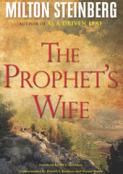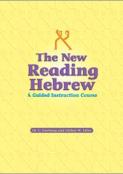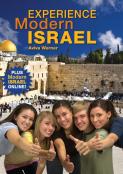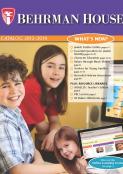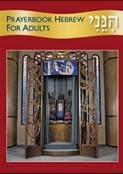- Home
- Play & Learn Home
- Online Enrichment
- Experience Modern Israel
- Israel It's Complicated
- Jewish and Me
- Jewish Holidays Jewish Values
- Jewish Values in Genesis and Jewish Values in Exodus
- Min Ha’aretz
- Our Place in the Universe
- Simply Seder
- The Prophets: Speaking Out for Justice
- Making T'filah Meaningful
- Make, Create, Celebrate
- Yom Haatzmaut Resources
- Hebrew Apps
- About The OLC
- What is the OLC?
- Introduction
- Get Started
- Resources
- OLC Content
- Parent Materials
- See My OLC Classes
- Store
Hineni Prayer Booklets Enrichment Guide
| Download Printable Version (PDF) |
Ways to enrich the Hineni Prayer Booklets for whole-class instruction, small groups, or self-paced, independent study PLUS: Downloadable worksheets to review prayer concepts and practice prayer reading.
By Terry Kaye and Sunny Yudkoff
The Hineni Prayer Booklets present twenty key Shabbat morning prayers in individual eight- or twelve- page booklet form. Some educators use all of the booklets, while others select booklets that match their specific prayer curriculum. This guide provides practical and hands-on learning activities to complement the Hineni Prayer Booklets and engage students across a broad spectrum of learning styles.
The guide is divided into four sections that present techniques for enriching instruction in the following settings:
A. Whole Class Instruction
B. Small Group Use
C. Self-Paced, Individual Study
D. All Settings—Whole Class, Small Group, and Individual Study
The guide concludes with ways to help students store the Hineni Prayer Booklets, involve families in their children’s studies, and help students celebrate their prayer achievements.
The following is a list of the twenty Hineni Prayer Booklets:
|
· Brachot |
· K’dushah |
|
The enrichment ideas that follow can be used for any and all of these booklets. No matter how many booklets are used, or in what order, teachers can also find dozens of additional ideas in the Teacher’s Guides for the Hineni textbooks.
A. Techniques to Enrich Whole Class Instruction
In the whole class model, students work on the same booklet at the same time. They generally practice prayer recitation together as a class, although they may complete activities as a class, in groups or pairs, or even alone. In general, students in the class are working at the same pace.
The following techniques can help enliven classes in which students begin and complete booklets at approximately the same time.
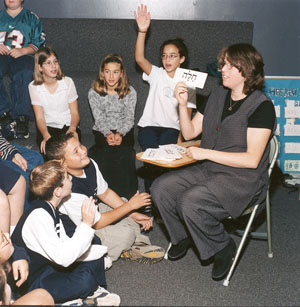
1. Engage students’ attention before introducing new material.
Students are likely to be receptive to and interested in the material if it is relevant to their own lives and their existing knowledge base. Part of a teacher’s challenge is to make the students care about the content. When students’ emotions are engaged they will be more likely to store the information in their long-term memories.
For example, before teaching the concept that humans are created b’tzelem Elohim (“in the image of God”) in the G’vurot booklet, the teacher can bring in a mirror to class and ask students how their reflection in a mirror differs from their image. Students might respond that their image is more than a reflection of their physical likeness. It also includes their character traits and interior qualities. Then, the teacher can segue to the traditional belief that each of us is made in God’s image—b’tzelem Elohim—and proceed with the lesson as presented in the G’vurot booklet. Other motivational tools for hooking students’ attention are photographs, music, news articles, poems, short stories, anecdotes, and general questions about students’ daily activities at home and in school.
2. Play a game during a class session or upon completion of a booklet.
Games can make a lesson more lively and varied. Games also facilitate learning in several ways. Games can:
-
practice and review reading and prayer skills.
-
provide reinforcement in a relaxed setting.
-
give incentives for learning and mastery.
-
give students opportunities for active participation.
Below are two games that students can play when using the prayer booklets:
-
Stop and Go
The teacher picks a line of prayer and announces the choice to the students. One student becomes the reader. The reader selects a word on that line and, without telling the class which word it is, reads the line and stops before the selected word. When the reader stops, it is a signal for the class to “go”—to read the word in unison. The reader then continues reading the rest of the line. The game is repeated several times, each time with a new reader. -
Find Your Partner
Before class the teacher writes questions about the prayers on colored paper, one question per sheet. The teacher writes the answers on pieces of white paper. In class the teacher distributes a sheet of colored or white paper to each student. Students seek out and stand next to their match, or partner. For example, a student holding the question, “What Jewish value means ‘welcoming guests’?” (colored paper) would find and stand next to the person holding the answer “Hachnasat orhim” (white paper). When all students have found their partners, pairs take turns reading aloud their question and answer. As a variation, teachers can write Hebrew prayer words on the colored paper, and English translations on the white paper.
3.Vary prayer reading techniques.
Students need lots of practice reciting the prayers in order to promote fluency and accuracy. The Hineni Teacher’s Guides contain numerous suggestions for practicing prayer reading. Among them are:
-
The teacher can remind students that a syllable is part of a word that holds one beat of sound. Every syllable has only one vowel. Students can draw an arch over each syllable in the words of a prayer with a pen or pencil or simply point to the syllables. Breaking the words into component parts helps students see patterns. Some teachers have the students clap out the syllables as they read them.
-
The teacher can direct students to specific phrases or lines by asking them questions that require careful examination, such as: “Which two words on line 6 are built on the root mem, lamed, chaf?”; or “Read the line that contains five letters that make no sound”; or “Find the two rhyming words on line 7”; or “Read the phrase that means “Ruler of the world.”
B. Techniques to Enrich Small Group Use
Students can develop their social and communication skills by engaging in group work and cooperative learning. By dividing the class into groups, teachers give students the opportunity to become each other’s tutors and partners in learning. Group work also provides teachers with a chance to play the role of coach—to guide each group based on the needs of its members and the goals of the entire group.

Group learning has been part of Jewish study throughout our history. The Talmud teaches the value of peer-to-peer learning. One well-known rabbinical statement reads, “I have learned much from my teachers, but from my friends more than my teachers” (Tractate Ta’anit 7a). The Talmud itself demonstrates the potential of group work, as it is essentially an extended discussion among rabbis and their peers.
There are several ways for teachers to divide the class into groups.
-
Learners at the Same Level: Teachers can group together students who have similar learning abilities or content knowledge. This allows students to progress at the same pace and to challenge each other with common levels of questioning.
-
Learners at Different Levels: Teachers can group together students of different learning capabilities or content knowledge. This allows students to teach each other. This method also helps prevent students from falling behind their classmates.
-
Learners at Random Levels: Teachers can group together students based on shared interests, for example, students who share the same favorite Jewish holiday or Jewish food. Such group divisions add an element of fun and camaraderie to classroom learning. Remember to consider the social dynamic (cliques, friend groups, etc.) of the class before grouping students.
The size of these small groups may vary depending on the number of students in the class as well as the overall lesson plan. Below are four ideas for group work—two ideas are conducive to groups of three to five students, and two ideas will help make student pairs more productive and effective.
For Groups of Three to Five Students:
-
Divide prayer word cards among students
The teacher can use the Hineni Word Cards or create word cards by writing or printing out the words of a prayer on index cards. The teacher distributes copies of the prayers and the appropriate index cards among groups, and instructs groups to place the cards in the order of the payer and read the prayer together out loud. The whole class is involved when each group takes a turn reading their prayer out loud. -
Ask groups to ask and answer the 5Ws of a prayer
The teacher instructs each group to ask and answer the 5W questions: (Sample answers taken from the Sh’ma)
-
-
Whom does the prayer address? (Israel)
-
What is the prayer talking about? (God is one)
-
Where is this prayer said? (at synagogue, at home, in bed)
-
When is this prayer said? (in the morning, in the evening, before bed)
-
Why do you think this prayer is important? (shows relationship between God and the Jewish people, shows that the Jewish people believe in one God)
-
For Student Pairs:

1. Organize hevruta-style learning
One Jewish education model of cooperative learning is that of the hevruta, or traditional Jewish study buddies. The teacher can organize hevrutot (plural) in his or her own class by dividing students into pairs. An example of such learning is for the pair to read the prayer out loud together and review its meaning. Then, individually, each partner circles the Hebrew words that he or she thinks are the key words of the prayer. Partners compare and discuss which words they circled and why.
2. Create Prayer Partners
The teacher instructs pairs to pick a prayer, read its English translation carefully, and review its themes and meaning. Pairs then write their own prayer on the same subject, taking turns writing lines. For example, after reading Sim Shalom,partners might take turns writing lines in a prayer for peace.
C. Techniques to Enrich Self-Paced, Individual Study
Some educators use the Hineni Prayer Booklets for self-guided, self-paced instruction so students can work independently and progress at their own speed. This is especially helpful for students who:
-
master the material quickly and are ready for more advanced work.
-
are absent and at risk of falling behind.
-
enrolled late in the year or enrolled in later grades and are catching up to the rest of the class.
-
have a lower level of motivation and/or ability, and would benefit from additional, focused practice of selected prayers.
-
have special needs and work more successfully alone than in a regular classroom environment.
When using the Hineni Prayer Booklets for self-guided and independent seat work, you may also wish to consider the following techniques:

1. Use the manual to have students correct their own work.
The Self Guided Hineni manual contains reproducible black-line masters with answer keys, review sheets, a prayer mastery chart, and all the other resources necessary for students to use the Hineni Prayer Booklets for individual study. The Self-Guided Hineni manual enables students to use the Hineni Prayer Booklets as part of a program of self-guided instruction. Students can study prayer independently, correcting their own work, and progressing at their own pace.
-
When students complete their booklets, photocopy the appropriate answer keys from Section I in the Self-Guided Hineni manualand have students check - and correct - their own work.
-
To assess students’ content knowledge, administer the appropriate review sheet from Section II of the Self-Guided Hineni manual. When students complete the review sheet, photocopy its answer key - also in Section II of Self-Guided Hineni - and have students check their own work.
-
Listen to the students recite a prayer - reproduced in Section III of the Self-Guided Hineni manual - and record their progress on theirpersonal Prayer Mastery Chart, photocopied from the back of the manual.
2. Assess students’ progress to decide whether they are ready to advance to the next booklet.
Some educators create their own assessment tools that set goals for student achievement and can be used to record progress. For example, Bryan Conyer, Director of Education at Congregation B’nai B’rith, Santa Barbara, California, reports that his students feel a sense of accomplishment with the completion ofeach prayer booklet. To assess his students’ progress, Bryan has created a progress chart for each prayer called “Mastering Siddur Hebrew 1, 2, and 3.”
Bryan informs students and their parents in advance about what he expects each student to learn and outlines what will be required of students to demonstrate competence before they progress to the next booklet. For an example of Bryan’s progress sheet, click here.
Bryan’s teachers and students sign off when the student has shown mastery in that area of competence. If students are absent, they are tutored or use the Hineni Interactive CDs to catch up on the work they missed. Above all, the students clearly understand what is expected of them.
When assessing students’ progress, consider students’ content knowledge and reading (recitation) fluency. If both areas are satisfactory, give students the next prayer booklet. If students need remediation, discuss with them strategies for improvement. By involving students in the process, you encourage them to take responsibility for their own learning.
For content knowledge, strategies for remediation may include:
-
Review material with a tutor, madrich or madrichah (teacher’s aide), teacher, education director, or a peer.
-
Allow students to complete the review sheet again, this time with their books open.
-
Send home Hineni Interactive CDs for students to play interactive games that practice key words and concepts.
-
Play vocabulary games with the students, especially using the Word Cards.
For reading (recitation) fluency, strategies for remediation may include:
-
Practice reading the prayers in school with a tutor, madrich or madrichah, teacher, education director, or a peer.
-
Send Hineni Interactive CDs home for students to hear the prayers read online, and to read along.
3. Assign the Hineni Interactive CDs to help motivate and assist students working independently.
In addition to playing the computer games and completing the reinforcement activities, students receive immediate feedback on Hebrew pronunciation. The teacher can also use the assessment features of the CDs to monitor student progress. For more information about using the CDs for assessment, click here.
Rachel Sesser, Religious School Director at Temple Sholom of West Essex, Cedar Grove, New Jersey, is creating a new Jewish educational experience in her program in which families are partners in the learning process. Students will use the Hineni Prayer Booklets in a traditional classroom model one hour a week, then will learn at home—with their families—using the interactive CDs a second hour, at a time of their choosing.
Rachel and her Hebrew coordinator will assess progress regularly against clearly defined learning outcomes that are part of a family brit, or learning contract (for example: by October 15, the student will be able to read the first Torah blessing fluently, by October 30, the student will be able to read and chant the first Torah blessing fluently). In addition, Rachel will monitor student progress on the Behrman House online assessment site.
For additional ways to use the Hineni Prayer Booklets for self-guided, independent study, click here.
D. All Settings - Techniques for Whole Class, Small Group, and Individual Study
The following techniques can be used with all students—whether in whole classes, small groups, or individually. Teachers can:
1. Hold group discussions about the prayer themes or concepts.
This is important to help students make meaning of the content. For example, after students have completed the G’vurot booklet, the teacher displays Hineni 2 Word Card 23 (gibor) and asks students to read the word and give its English meaning (“mighty,” “powerful”). The teacher tells students there is a third meaning for gibor— “hero”—and asks the students (a) who they consider to be heroes, (b) if they personally know someone they would call a gibor. The teacher continues the discussion in this vein.
2. Use the Hineni workbooks for additional activities and reinforcement.
Chapters in the workbooks for Hineni 1, 2, and 3 follow the exact order of the chapters in the Hineni books. The teacher can use selected chapters from the workbooks to practice skills and concepts students have learned in the Hineni Prayer Booklets. Or the teacher can download select pages from the workbook for additional practice.
3. Add a taste of conversational Hebrew.
The Ulpan Alef and Ulpan Bet four-page modern Hebrew language folders are ideal for a change of pace from prayer to modern Hebrew and a nice treat for students, whether they are working as a class or alone. The Teacher’s Guides provide answer keys for the activities.
4. Use the Hineni interactive CDs.
Most schools send home the Hineni interactive CDs for additional practice and to extend instructional time beyond the classroom, but the CDs can certainly be used in the classroom or in the computer lab. Children also enjoy playing modern Hebrew games with the Ulpan Alef Interactive CD.
5. Provide opportunities for creative thinking.
The best way for students to make meaning of—and retain!—the prayer concepts is for them to focus on ideas in the booklets and develop personal insights. In this way students become actively involved in their own learning.
For example, students can:
-
write their own name for a prayer (in English).
-
write a headline and a newspaper article about a prayer.
-
write a short poem about a prayer.
-
draw the theme of a prayer. For example, students learning about the theme of gratitude in brachot can draw a picture of a child saying thank you for a gift.
-
write a mock interview with the “author” of a prayer.
-
write an English acrostic about the theme of the prayer (as in L’chah Dodi or Ashrei).
-
for the Sh’ma, write what the number one means to them (for example: one mother, one home, one bed…).
-
for the V’ahavta, brainstorm songs with “love” in the title (for example, the Beatles “All You Need Is Love”).
Concluding Ideas
Below are two final enrichment ideas for a program in which the Hineni Prayer Booklets are used and one practical hint:
-
Involving Families: Consider sending parents their own set of Hineni Prayer Booklets to review at the same time as their children. Encourage parents to set aside fifteen minutes after each religious school session to let their children teach them the prayer and lessons that each prayer booklet contains. You may also encourage parents to help their children by listening to their children read at home using the Student Pages from the Hineni Family Companions. Parents can follow along using the Parent Pages with Hebrew and transliteration. Parents may want to practice reading prayers with their child on the Behrman House Family Site.
-
Celebrating Prayer Achievements: The Hineni Prayer Booklets offer your curriculum both flexibility and structure—the flexibility to teach the prayers you choose and the structure with which to reinforce the meaning, rules, and content of each prayer. To keep the class on track, the teacher can create a prayer star chart. On one axis, the teacher lists the students’ names. On the other, he or she lists the Hineni Prayer Booklets the students will learn. After students successfully complete and review the content of a booklet, and the teacher—and students—are satisfied with their progress, they place a star next to their name. When the whole star chart is filled, it’s time for a prayer party! The teacher can consider giving the party a theme, such as “saying thanks,” and can ask students to bring in songs that include the words (or any variety of the phrase) “thank you.”
-
Storing the booklets: Provide each student with a three-ring binder containing plastic protective three-hole punched folders in which students can store their prayer booklets. This method gives dignity to the prayers while protecting the booklets. Students can also store the review sheets and their prayer mastery chart in the binder for easy access. Have students decorate their folders, making sure their names are part of the decoration, or print out a full-color label here.
By using these techniques and others drawn from the Hineni Teacher’s Guides, teachers will be able to round out their students’ Hineni Prayer Booklets experience, fill class time productively, and help students refine their prayer skills.
B’hatslahah!



